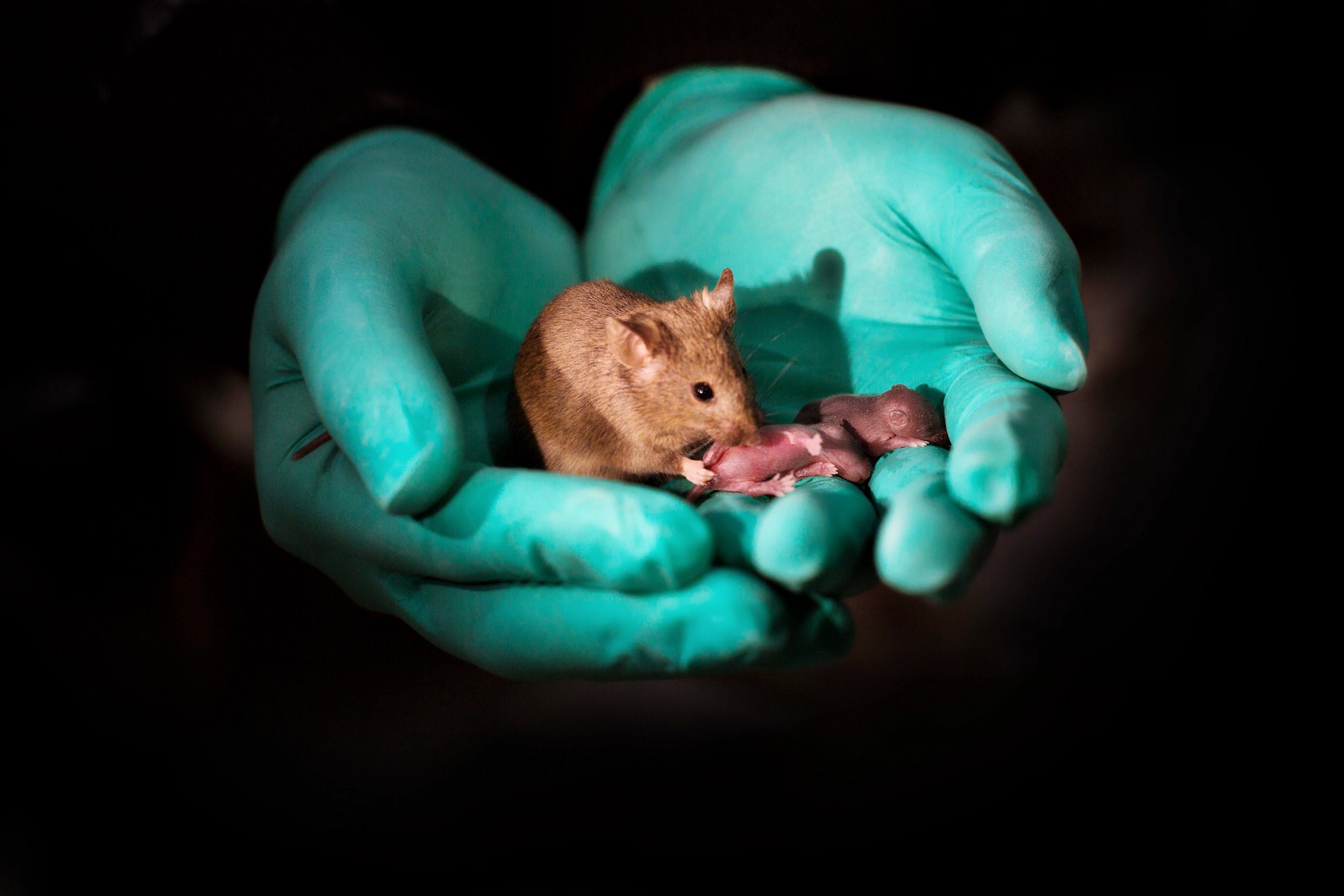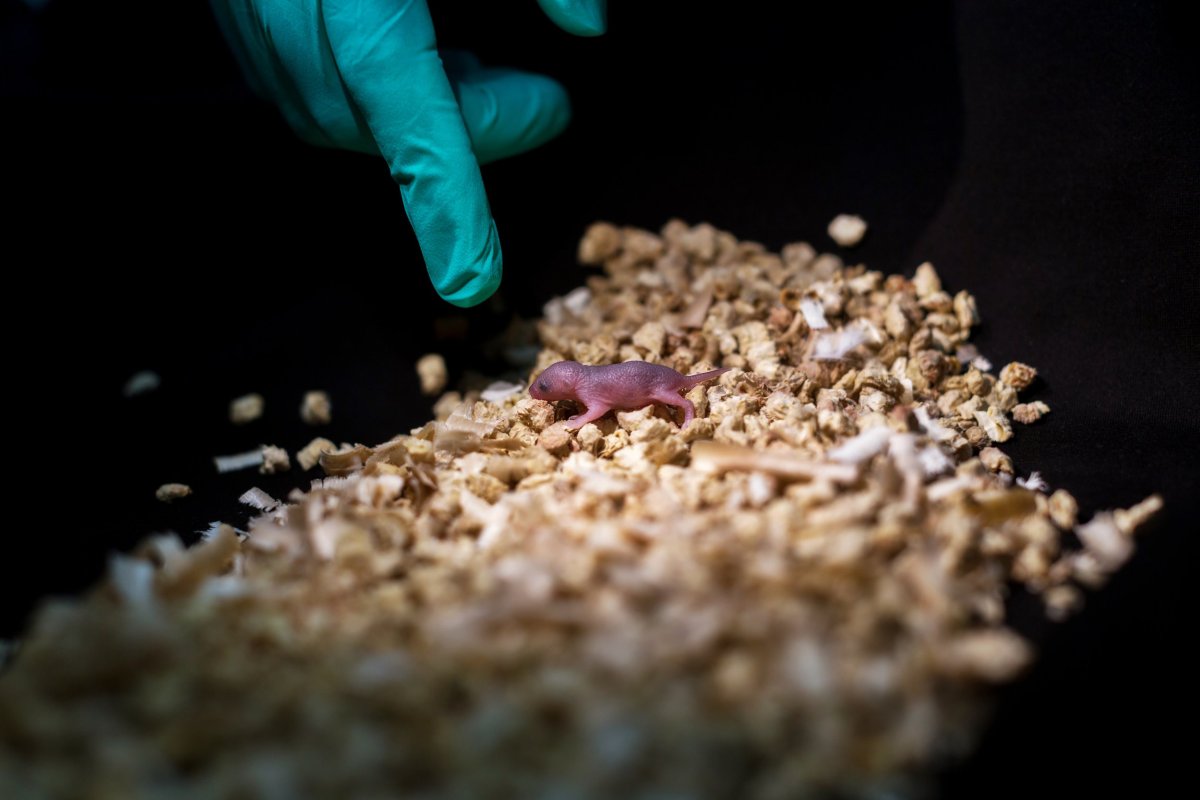
Using advanced new gene-editing techniques, scientists from the Chinese Academy of Sciences have produced healthy, viable mouse babies using DNA taken from two mothers—without a father in sight.
According to a paper published in the journal Cell Stem Cell, the team also created mice with two dads, but these offspring only survived for a couple of days. The idea behind the research was to investigate why it's so challenging for mammals of the same sex to produce offspring and how these barriers can be overcome.
"Although animals have three different reproduction modes, known as asexual reproduction, unisexual reproduction and sexual reproduction, mammals can only undergo sexual reproduction," Qi Zhou, a senior author of the study, told Newsweek. "How does this happen? We got interested in this question."
While some reptiles, amphibians, fish and other animals can reproduce with one parent of the same sex, mammals do not have this capability. Even with lab fertilization technologies, it is very difficult to achieve.
"It had been thought that reproduction in mammals was predicated on receiving DNA from both maternal and paternal origin as eggs and sperm have a different yet complementary pattern of coding," Megan Munsie, Deputy Director of the Centre for Stem Cell Systems at the University of Melbourne, who was not involved in the study, said in a statement. "This patterning is referred to as imprinting and is imposed during sperm and egg development in mammals."
As a result, mammal offspring that don't receive genetic material from both a mother and a father could experience developmental abnormalities or may not be viable.
However, the Chinese researchers were able to create pups solely from female genetic material using embryonic stem cells—which are capable of turning into any other cell—that contained only a single set of chromosomes rather than the pairs that are usually present in mouse cells.
Chromosomes are thread-like structures made up of tightly coiled DNA and proteins found in the nucleus of most living cells that carry genetic information in the form of genes. Cells that have half the usual number of chromosomes, like the ones used in the experiment, are referred to by the term "haploid."
The researchers deleted several regions of the genome in the haploid stem cells to remove the imprinting genes. These modified stem cells were then injected into normal eggs (from another mouse) to create embryos that were transplanted into a surrogate mouse.
This resulted in the birth of 29 healthy pups, which lived to adulthood and were even able to have offspring of their own. The process was inefficient, however, with only a small proportion of the 210 embryos used developing into a pup.
Previously, researchers have produced bimaternal mice—mice with two mothers—however, the technique used in this case was not as practical as the latest method and the offspring displayed several abnormalities.
To create the pups from only male genetic material, the team used a similar process to how they created the bimaternal pups, albeit slightly more complicated.
"Again, they injected the nucleus from genetically modified male haploid stem cells, alongside sperm from another mouse, into eggs where the female chromosomes were removed," Munsie said. "The resulting embryos were then allowed to develop in the lab for several days."
"However, instead of transferring to surrogates, the researchers first obtained stem cells from these embryos and then combined these 'second round' stem cells with other embryos that had been altered so that they could only contribute to the placental tissue," she said.

This method was much less efficient, producing only two live pups from 500 embryos, both of which died within 48 hours of birth. The researchers hope to improve the process though, so that the bipaternal mice can live into adulthood.
"Our research firstly proved that the defects in the bimaternal mice can be eliminated, and bipaternal reproduction barriers in mammals can be crossed through genomic imprinting modification," Zhou said. "In addition, this research revealed some of the most important imprinted regions that hinder the development of uniparental mice. We [also] show a new way to produce offspring of same-sex mammals."
While the new approach is still in its infancy, it could have a number of significant implications, experts say, allowing us to better understand certain genetic disorders in humans, produce better research animals or, perhaps, clone endangered species.
There is also the possibility that the method could one day be used to help human same-sex couples reproduce, however, there are many practical, technological and ethical obstacles that need to be overcome before such a procedure becomes a reality, according to Robert Norman, Professor of Reproductive and Periconceptual Medicine at the University of Adelaide.
"The first challenge will be to make babies from artificially derived eggs and sperm from male and female couples," he said in a statement. "No ethical permission has been given anywhere to attempt to produce live offspring although embryos have been produced experimentally with no transfer to the uterus."
Munsie also notes the complexity of the challenges that lie ahead before the approach can be used on a wider scale.
"While this finding provides insights into the control of reproduction, being able to routinely make mice and other mammals from same-sex parents will remain a significant challenge," she said. "At a technical level, significant refinements will need to be made to avoid growth abnormalities and other complications."
"The paper is a timely reminder of the power of technology to explore how development and inheritance is controlled," she said. "However, it is also a reminder of the need to discuss the potential impacts of technology on society, even when at such a preliminary stage. We need to pause and evaluate under what circumstances, if any, the technology should be applied and, if so, to whom."
Uncommon Knowledge
Newsweek is committed to challenging conventional wisdom and finding connections in the search for common ground.
Newsweek is committed to challenging conventional wisdom and finding connections in the search for common ground.
About the writer
Aristos is a Newsweek science reporter with the London, U.K., bureau. He reports on science and health topics, including; animal, ... Read more
To read how Newsweek uses AI as a newsroom tool, Click here.








